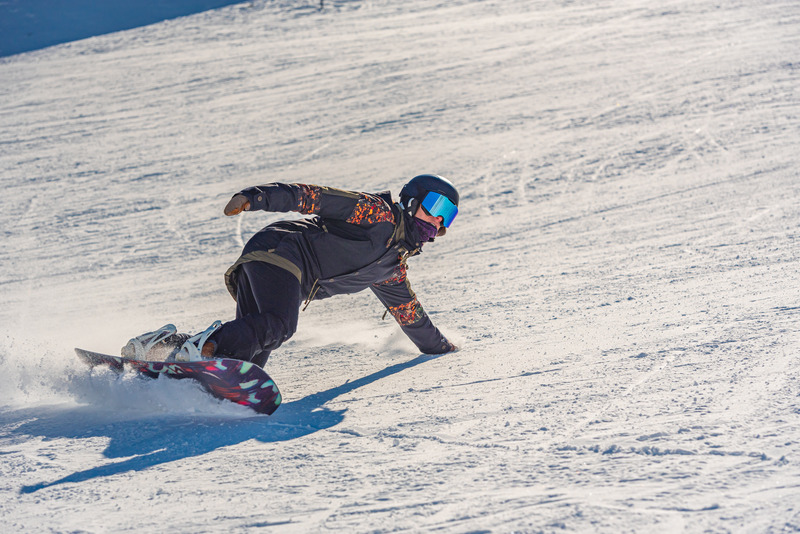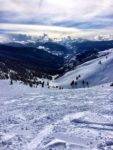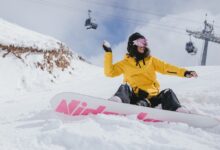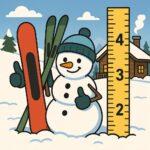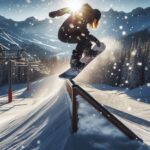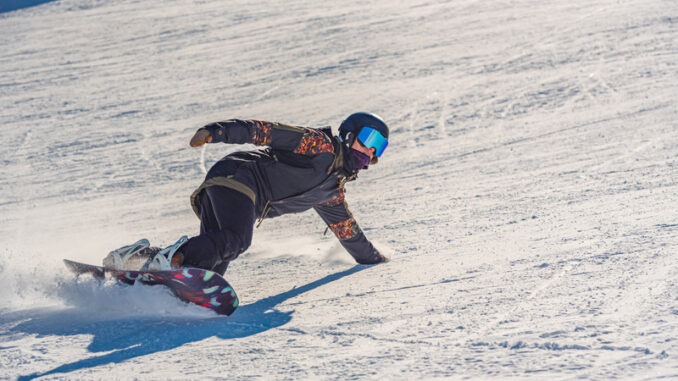
You’ve mastered the sidewalks and skate parks and are ready to take on the snowy slopes. The transition from skateboarding to snowboarding can be an exhilarating one. It’s a chance to tackle a new challenge, to test your skills in a different environment, and to experience the thrill of gliding down a mountain instead of across concrete. The snowboarding world opens up a whole new range of possibilities, from exploring breathtaking mountain landscapes to perfecting tricks on the snow.
However, transitioning from skateboarding to snowboarding comes with challenges, like any new endeavor. It’s not just about swapping your skateboard for a snowboard; it’s about adapting to a new environment, understanding the differences between the two sports, and learning how to transfer your skateboarding skills to the snow. But you can transition smoothly and safely with some preparation, guidance, and practice.
This guide is here to help you navigate this exciting journey. It will take you through the key differences between skateboarding and snowboarding, the skills you can transfer, the gear you’ll need, and the tips you need to remember as you transition from the urban jungle to the snowy mountains. Let the adventure begin!
Understanding the differences between skateboarding and snowboarding
The environment: Urban vs. mountain
One of the most apparent differences between skateboarding and snowboarding is the environment. With skateboarding, you’re used to the urban landscape: concrete sidewalks, asphalt roads, and skate parks. You’ve learned to navigate curbs, cracks, ramps, and rails. You’re accustomed to the city’s noise, the sun’s heat, and the brutal impact of a fall on concrete.
On the other hand, snowboarding takes you to a completely different setting: the mountains. You’ll deal with snowy slopes, icy patches, and unpredictable weather conditions here. The terrain, with moguls, steeps, and trees, can be varied and challenging. The cold can be biting, the altitude can affect your breathing, and a fall on the snow can feel like landing on a cushion, depending on the snow conditions. It’s a whole new world to explore and master.
The board: Differences in board design, size, and functionality
Your board, your trusted companion in skateboarding and snowboarding, also undergoes a significant transformation. Skateboards are smaller, lighter, and feature two trucks and four wheels. They’re designed for agility, allowing you to make sharp turns, perform tricks, and navigate busy city streets.
Snowboards, however, are larger and broader and feature bindings that secure your feet to the board. They’re designed for stability and control on the snow, enabling you to carve turns, navigate various snow conditions, and perform jumps and tricks on the slopes.
Movement: Fixed feet vs. free feet
Another key difference lies in the movement. In skateboarding, your feet are free. You push off the ground with one foot to gain speed, and you can adjust your foot positioning for different tricks. Your body and your board can move independently from each other.
In snowboarding, your feet are fixed to the board with bindings. This means you can’t use one foot to push off the snow; you gain speed through gravity and by carving turns. Your body and your board move as one unit, and your turns and tricks are initiated through body weight and balance shifts.
The gear: Protective equipment and clothing differences
Regarding protective gear and clothing, skateboarding and snowboarding also differ significantly. In skateboarding, you typically wear a helmet, knee, elbow pads, and maybe wrist guards. Your clothing is likely to be light and comfortable, allowing for ease of movement.
In snowboarding, you’ll need a snowboarding or skateboarding helmet, wrist guards, and padded shorts for falls. But you’ll also need a new set of clothing: waterproof and insulated jackets and pants, thermals, gloves, and goggles to protect you from the cold and the snow. The right gear can greatly affect your comfort and safety on the slopes.
Key skills you can transfer from skateboarding to snowboarding
Balance: How skateboarding balance can be beneficial in snowboarding
Balance is one of the key skills you can transfer from skateboarding to snowboarding. Skateboarding requires a keen balance to stay on the board, perform tricks, and navigate obstacles. This skill can be incredibly beneficial in snowboarding, where you also need to maintain your balance as you glide down the slopes, carve turns, and perform jumps and tricks.
Turning: Comparing carving on a skateboard to carving on snow
Turning is another skill that can be transferred from skateboarding to snowboarding. In skateboarding, you carve turns by shifting your weight and leaning into the direction of the turn. This fluid movement results in a sensation of rolling on wheels. In snowboarding, while carving is initiated similarly by shifting weight, there’s also the technique of “skidding.” Skidding turns in snowboarding involve allowing the tail of the board to slide out, creating a wider, more controlled turn. This action contrasts with the direct rolling feel of a skateboard, offering a different, sliding sensation due to the lack of wheels and the board’s interaction with the snow’s surface.
Air awareness: Translating skate park tricks to jumps and tricks on the snow
If you’re a skater who loves the skate park, your air awareness can also be a valuable asset in snowboarding. Being comfortable in the air, understanding how to control your body, and knowing how to land safely are all skills you can bring to the snowboarding terrain park. With practice, you can translate your skate park tricks to jumps and tricks on the snow, adding a new level of fun and excitement to your snowboarding experience.
Tips for transitioning from skateboarding to snowboarding
Choosing the right snowboarding gear
Selecting the right gear is crucial when transitioning from skateboarding to snowboarding. This includes choosing a snowboard that’s the right size and style for your skill level and the type of snowboarding you want to do, as well as selecting the right bindings and boots for comfort and control.
Finding the right snowboarding lessons
To transition from skateboarding, consider snowboarding lessons at your chosen ski resort. Most resorts offer beginner to advanced lessons. Research reputable schools by checking online reviews or asking other snowboarders. Decide between group sessions for cost-effectiveness and camaraderie or private lessons for focused attention. Book early, especially during peak times, and consider multiple sessions for skill reinforcement. Don’t forget to utilize snowboarding forums online for instructor recommendations and additional guidance.
Practicing snowboarding techniques
Like any new skill, snowboarding requires practice. Spend time on the slopes practicing your turns, balance, and control. Start on easy slopes and gradually move up to more challenging terrain as you gain confidence and skill.
Gaining confidence on the snowboarding slopes
Building your confidence is also key in transitioning from skateboarding to snowboarding. This comes with time, practice, and experience. Don’t rush yourself; take the time to learn and improve at your own pace. Everyone learns at different rates, and it’s okay to take it slow.
Common challenges in transitioning and how to overcome them
Transitioning from skateboarding to snowboarding comes with its share of challenges. These can include adapting to the cold and the altitude, navigating different snow conditions, and getting used to having your feet fixed to the board. But with the right mindset, preparation, and practice, you can overcome these challenges and enjoy the thrill of snowboarding.
Conclusion: Embrace the thrill of snowboarding
Transitioning from skateboarding to snowboarding is an exciting journey. It’s a chance to expand your skills, to experience a new environment, and to embrace a new adventure. Yes, it comes with challenges. Yes, it requires effort and practice.
But the rewards are worth it: the thrill of carving turns on the snow, the joy of mastering a new trick, and the freedom to explore the mountain. So gear up, get out there, and embrace the thrill of snowboarding.
You’ve got this!

